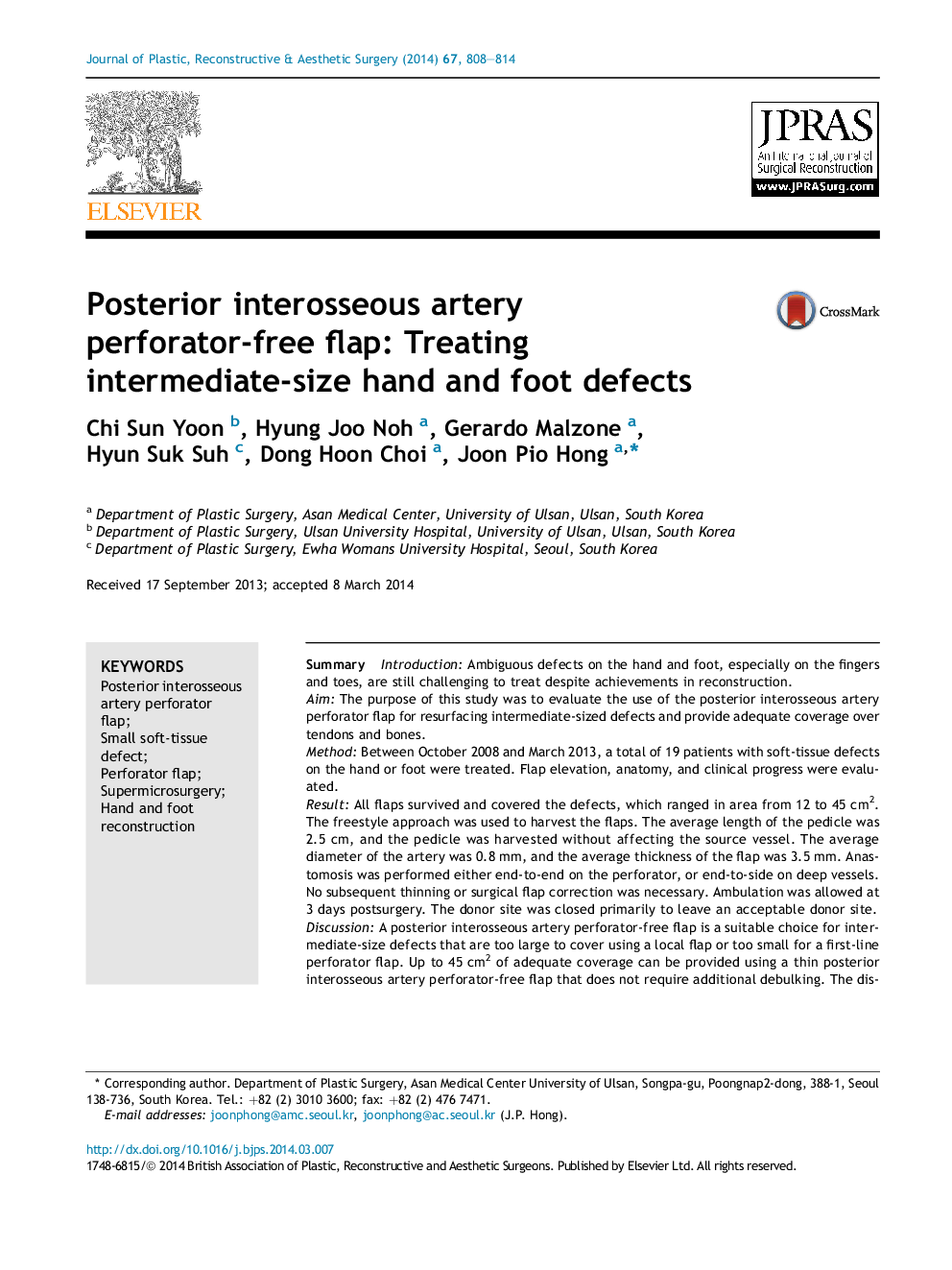| Article ID | Journal | Published Year | Pages | File Type |
|---|---|---|---|---|
| 4117347 | Journal of Plastic, Reconstructive & Aesthetic Surgery | 2014 | 7 Pages |
SummaryIntroductionAmbiguous defects on the hand and foot, especially on the fingers and toes, are still challenging to treat despite achievements in reconstruction.AimThe purpose of this study was to evaluate the use of the posterior interosseous artery perforator flap for resurfacing intermediate-sized defects and provide adequate coverage over tendons and bones.MethodBetween October 2008 and March 2013, a total of 19 patients with soft-tissue defects on the hand or foot were treated. Flap elevation, anatomy, and clinical progress were evaluated.ResultAll flaps survived and covered the defects, which ranged in area from 12 to 45 cm2. The freestyle approach was used to harvest the flaps. The average length of the pedicle was 2.5 cm, and the pedicle was harvested without affecting the source vessel. The average diameter of the artery was 0.8 mm, and the average thickness of the flap was 3.5 mm. Anastomosis was performed either end-to-end on the perforator, or end-to-side on deep vessels. No subsequent thinning or surgical flap correction was necessary. Ambulation was allowed at 3 days postsurgery. The donor site was closed primarily to leave an acceptable donor site.DiscussionA posterior interosseous artery perforator-free flap is a suitable choice for intermediate-size defects that are too large to cover using a local flap or too small for a first-line perforator flap. Up to 45 cm2 of adequate coverage can be provided using a thin posterior interosseous artery perforator-free flap that does not require additional debulking. The disadvantages of a short pedicle can be overcome using perforator-to-perforator supermicrosurgery.
